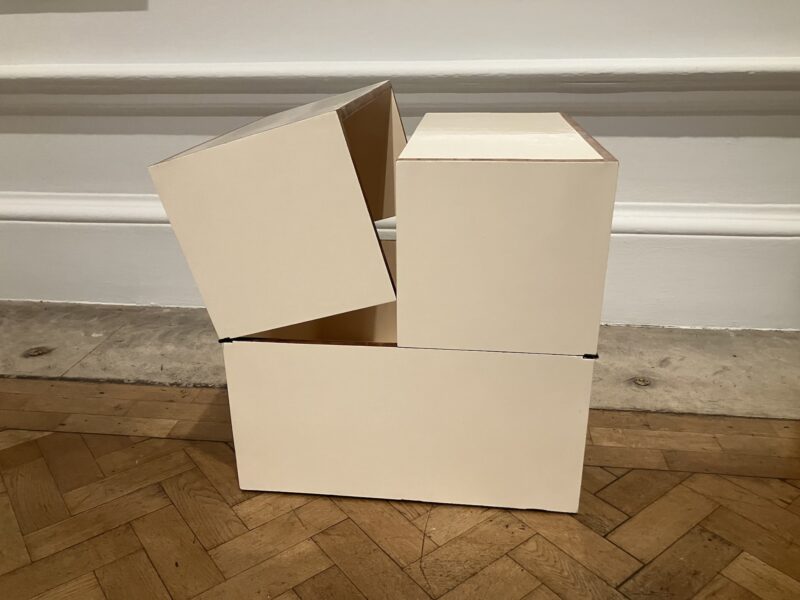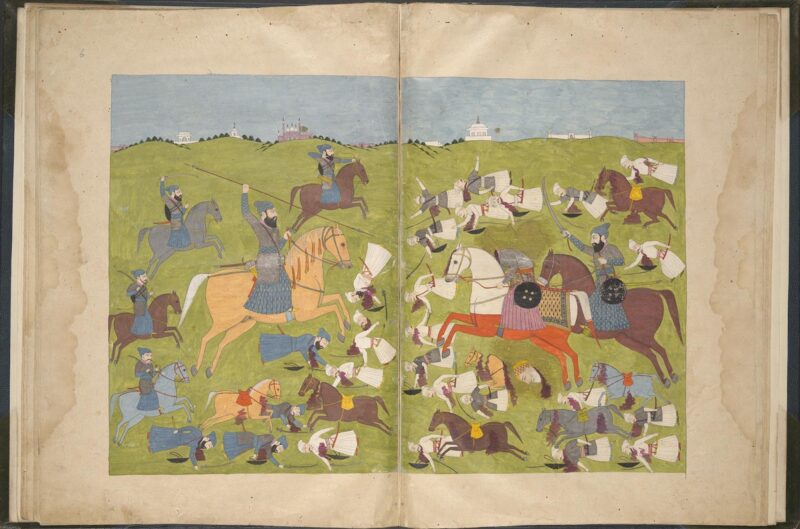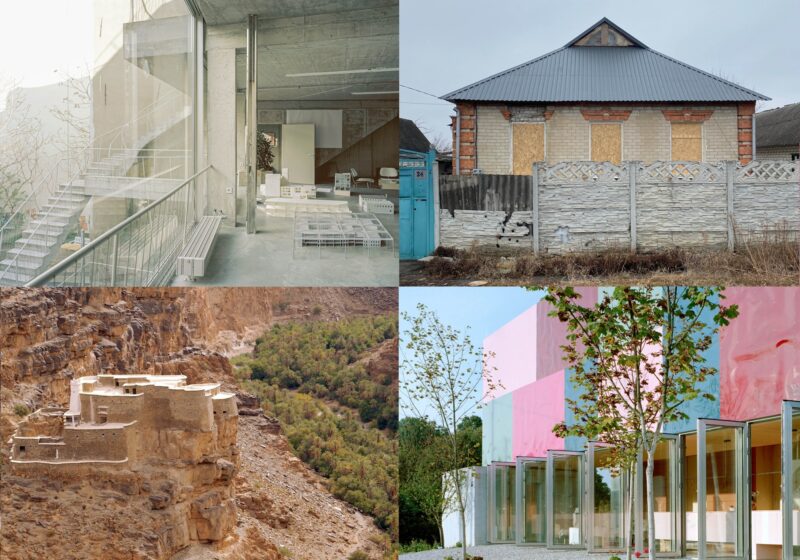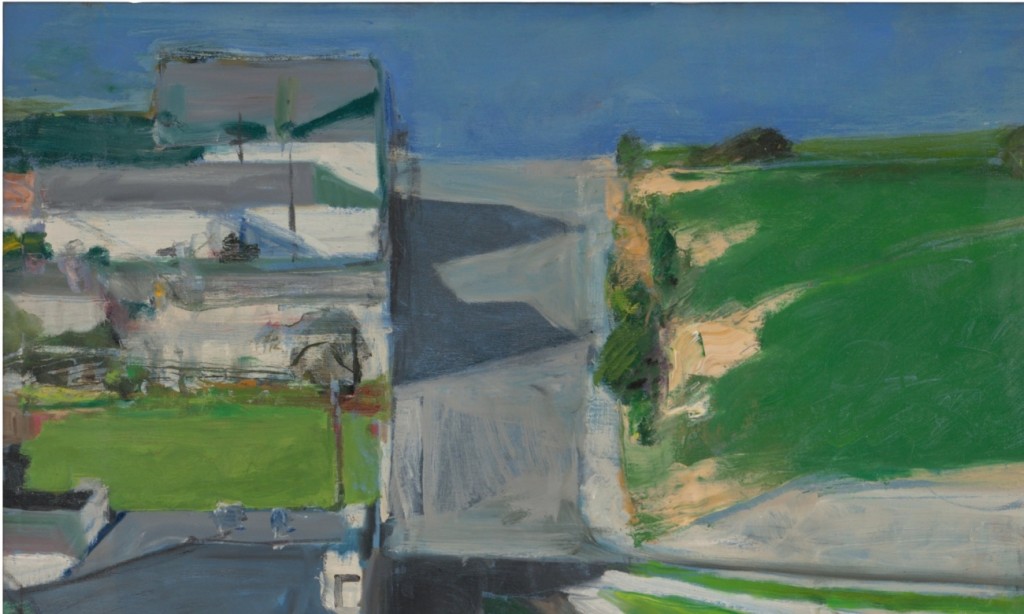
Detail from Cityscape #1, 1963 by Richard Diebenkorn. Photograph: 2014 The Richard Diebenkorn Foundation
Richard Diebenkorn could be subtle and nuanced, delicate and clumsy. All this gives a human scale to his retrospective in the Sackler Wing of the Royal Academy. Catherine Lampert mounted a great Diebenkorn show at the Whitechapel in 1991, two years before the American artist’s death. It is good to see him again. But neither show is definitive, and somehow the RA show feels a bit too truncated.
Diebenkorn was almost, but not quite, an abstract expressionist. He was sometimes a landscape painter, sometimes a portraitist and painter of figures, but mostly an abstractionist. Although a West Coast painter, his early, 1950s abstractions had a European feel. These were easel paintings. Sometimes there were pigs in them, or horses, or a line that was part woman’s body, part echo of De Kooning. Once or twice I was reminded of William Scott, or a sort of ill-tempered art informel painter. He painted some great still lifes: a pair of scissors on a table, a knife in a glass of water, a slice of bread, the exposed sink plumbing in his studio (the latter is particularly good, though isn’t in the show here). Diebenkorn wasn’t Chardin but he could give ordinary things a kind of material solidity and presence. He was good at painting grubby corners of his studio, which flowed into the oil painters’ gunge on the paintings themselves.
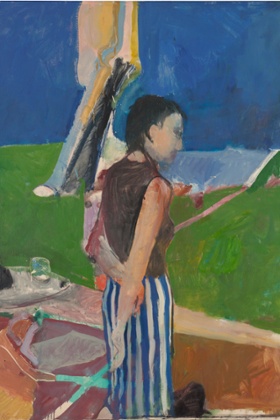
His immediate environment fed into his art nefariously, whatever kind of painting he was making at the time. When Diebenkorn turned to figurative painting in the later 1950s – Edward Hopper, Pierre Bonnard and Matisse being strong influences – the figures were often not that great. Nor were Hopper’s, in all sorts of ways that don’t feel that important, precisely because Hopper gave them a psychological dimension that Diebenkorn mostly lacked or wasn’t that interested in. People tend to hang around in the sun on the porch, read a newspaper, reach for a coffee-cup, yawn or gaze off into the distance, or down at their lap, all under the bright light and strong shadows of coastal California. The faces he painted often seem mask-like and caked, as though they’d been made out of cosmetics. Maybe it’s the light that made them so.
But Diebenkorn was good at houses climbing a hill, light and shadow on the buildings and the tarmac, the fields at the edge of town and the cliff where the lands frays and collapses into the sea. All of which leads me to his Ocean Park series, which occupied him for 20 years, from the late 1960s onward.
First coming across Diebenkorn’s Ocean Park series of paintings at London’s Marlborough Gallery in the early 1970s, I was struck by their tailored expanses of thin but intense colour, the washy planes that spread and squeeze and fold about one another. Even scrubbing out and erasure became a positive. You could see his changes of heart, his adjustments and constant revisions, yet everything, including the subtractions and wipings-out, added something and contributed to the painting’s cumulative affect. Each painting is like a diary of the act of painting.
Diebenkorn became a delicious colourist. He could make the murkiest, contaminated dishwater colours of his washing-downs and turpsy floods sing, especially as these were set against strong, clear, semi-transparent accents. I love how the Ocean Park paintings go from dirty to clean, and from strong colour to weak, from close-toned contrasts and harmonies to breakdowns of geometry and line, spatterings and leaks and dribbles and incomplete erasures. All this could become a tricksy and mannered affectation, but somehow wasn’t.
The edges between shapes and forms, as well as the edge of the canvas itself, were places of constant renegotiation – just like obstructed horizons, or light glancing off a rooftop or round the edge of a door. There are expanses and edges, crossings and recrossings, sharpness and fuzz, tailings off and redirections. Sometimes it is as if, as he approached the edge of the painting, he was worried he might fall off the edge of the world; you imagine what it would be like to arrive at the far collapsed horizon that’s squeezed right up there at the top of the canvas, but you’ll never get there.
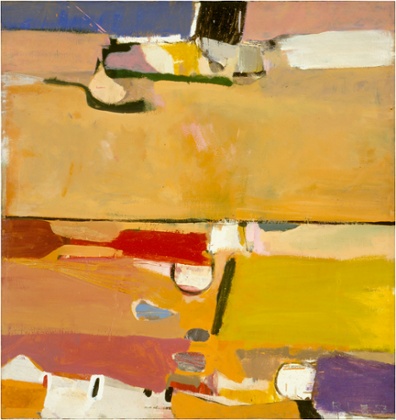
The Ocean Park paintings – made in Santa Monica when the area was much less developed – are filled with passages from one place to another. Its like going from the city to the edge of town, then out into the country. Sometimes your eye drives purposefully from one place to another. At other times you find yourself walking in the heat, only to dither and pause, as though you had just discovered you’ve dropped your keys and have to retrace your steps. It is a bright hot day and the sky is an infinite blue. The air is clean but there’s trash at the side of the road and weeds in the gutter and the fields are as often rectangles of dust as they are lush with crops. The tractor has drawn curves in the ploughed dirt.
Diebenkorn’s Ocean Park paintings occupy a sort of hinterland. They’re a beautiful distraction, paintings to lose your way inside. They’re not quite landscapes, not geometric abstractions and not exactly colour-field painting either. They belong to a time and place but have in them times and places all their own. They’re accumulations of incident within a larger scheme of things. You can see Diebenkorn thinking as he paints, getting lost, turning back, wandering off into the fields, finding the larger view. I just wish there were more of them here, and they were given more space around them.
guardian.co.uk © Guardian News & Media Limited 2010
Published via the Guardian News Feed plugin for WordPress.
